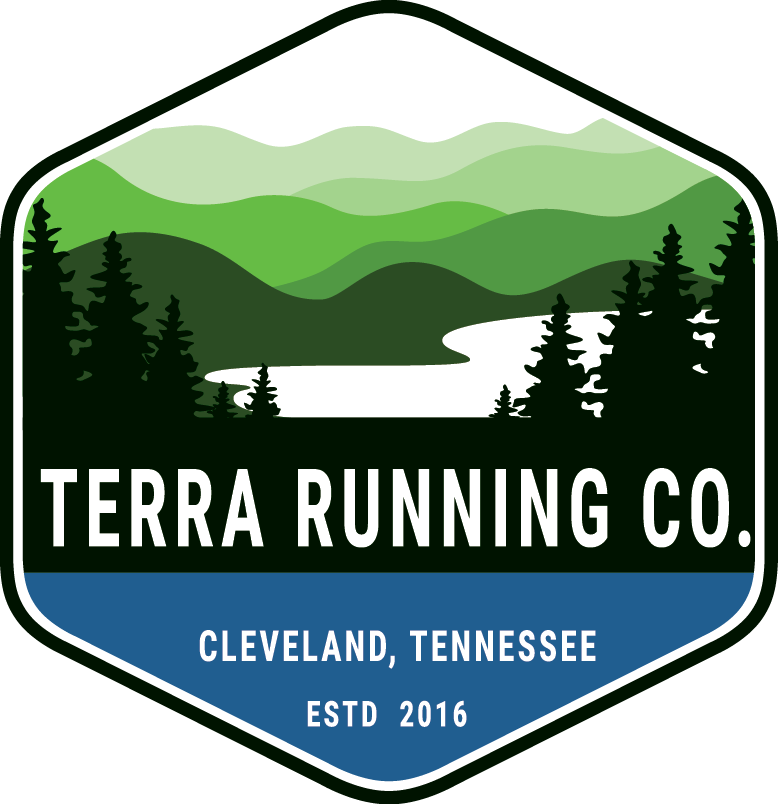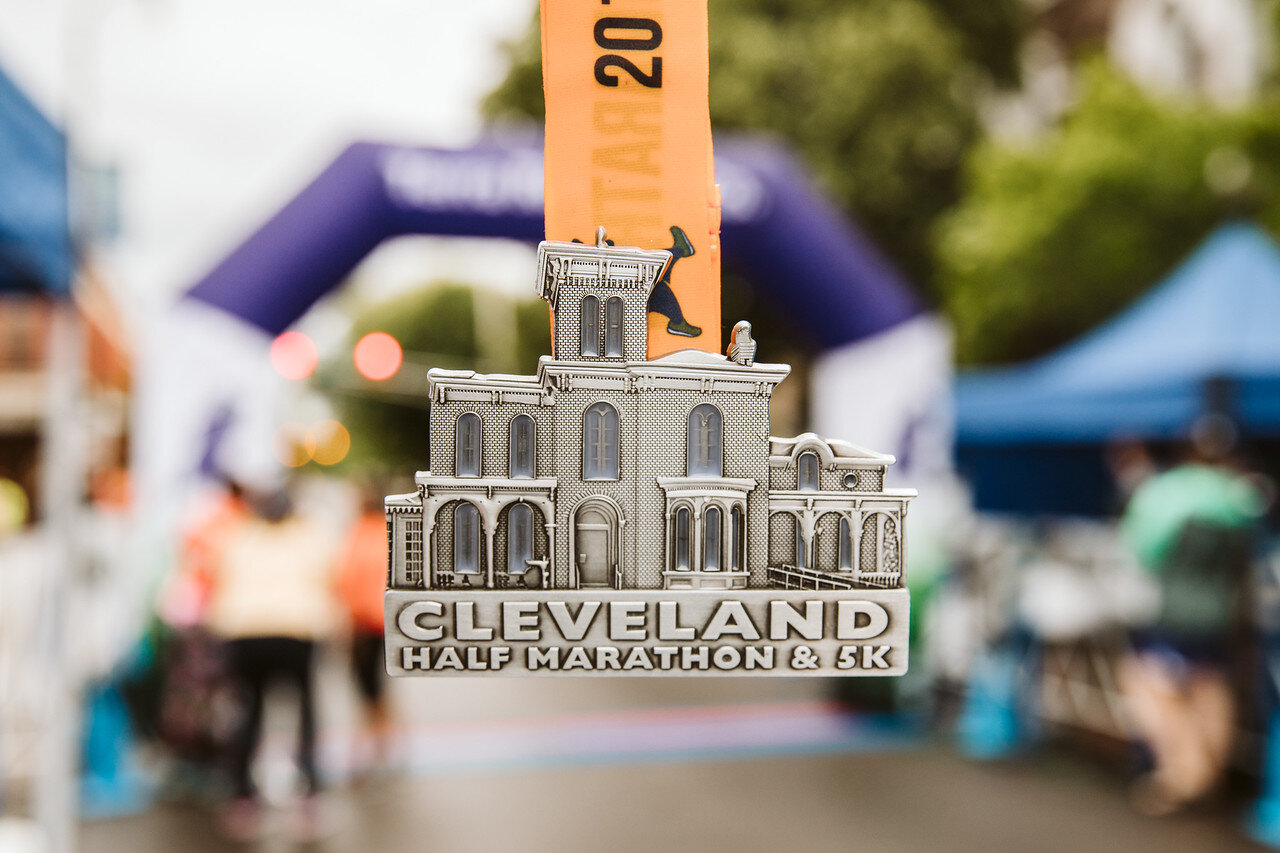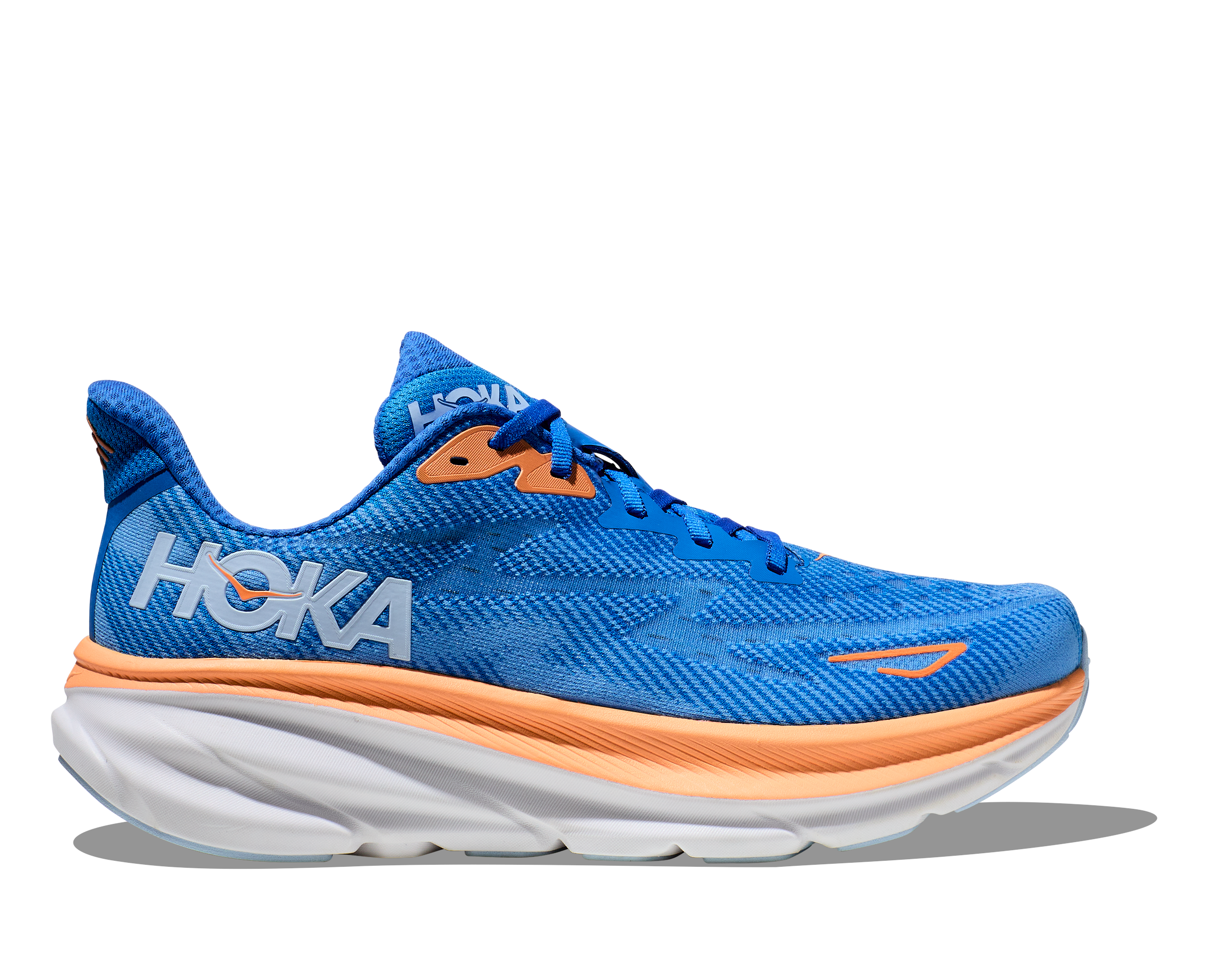The Clifton 9
Maybe you have heard from friends or family members about how incredible Hoka shoes are. Maybe you’ve seen people at work wearing them and wondered, “Is that for me?”
It is true that Hoka shoes are incredibly popular across ages and for a variety of uses; from running, to work wear, to everyday life, Hokas seem to be ubiquitous. And for good reason! These shoes are cushioned, supportive, and light; Three things that are crowd-pleasers for almost everyone. But despite the basic things that make a Hoka a Hoka, there are quite a few differences across models. Do you need the max support of the Gaviota? Or the arch of the Clifton? The speed of the Mach or the utility of the Challenger? Read on to learn about some of the basics of the models we carry at Terra Running Company, but be sure to come in and let us fit you for a pair! Reading about the differences between shoes is great but it is never a substitute for actually getting the shoe on your foot and feeling if it is right for you.
Neutral Shoes
Neutral shoes are for runners and walkers that don’t overpronate (roll excessively inward when they walk or run). It is, however, important to note that there could be scenarios when you might still want to try one of these shoes even if you overpronate. This is another reason we encourage you to come and let us fit you!
The Bondi 8 has ample cushioning
Clifton 9: The Clifton 9 is one of Hoka’s flagship shoes and as such gets along with almost everyone. This cushy shoe now comes with 3 more millimeters of midsole than its predecessor for even more squish but with less weight than before. It has a decently pronounced arch that is excellent for people who like a lot of support under their feet.
Bondi 8: The Bondi 8 is another one of Hoka’s most well-known models. If the Clifton has squish, the Bondi has more! This model has a wide base for extra support and is unabashed in its amount of cushion. Very comfortable for long days on your feet or long recovery runs, the Bondi is classic Hoka.
Mach 5: The Mach is lighter and less cushioned than both the Clifton and Bondi. This shoe is built for speedy runs and workouts. It does not have a rubber outsole which means it will grip the ground better than its shoe siblings but will wear down faster. It also has a nice “swallow tail” on the back of the midsole to support lateral movement. This shoe is a Hoka for someone who doesn’t want the weight and height of the Clifton or Bondi.
Transport: The Transport is a brand-new lifestyle shoe from Hoka. This shoe is not made to run or workout in (though, we won’t stop you if you want to use it for that!) but is made for the rest of your life: walking, commuting, traveling, etc. It has a Vibram outsole so it will grip the ground better than a regular shoe, and a Cordura water-resistant upper. It also comes with pull laces so you don’t have to worry about tying your shoes.
Stability Shoes
The Arahi 6 has a J-Frame for added support
Stability shoes are perfect if you overpronate (not sure if you do? Come and see us! We will analyze your gait) but won’t hurt you if you don’t. These shoes have some extra tech in them to help keep you aligned to prevent injury.
Arahi 6: The Arahi is like the sister shoe to the Clifton. With cushion, but not toooo much cushion, it is surprisingly comfortable for a lot of people — even those who don’t need a dedicated stability shoe. The Arahi uses what Hoka calls a “J-Frame” in the midsole for extra support and alignment.
Gaviota 6: The Gaviota is Hoka’s most stable option. With max cushion and an “H-Frame” in the midsole, this shoe cradles the foot and keeps its occupant on track with each step. It also has a nice wide midfoot fit which accommodates a variety of feet.
Trail Shoes
Trail shoes are perfect for taking on your next run or hike in the woods but are also an excellent option for someone who is tough on their shoes and wants something a bit more rugged for day-to-day. These shoes are going to have a more aggressive outsole with lugs more like you would find on a hiking boot.
The Speedgoat 5 has aggressive tread for grip on the toughest of surfaces
Speedgoat 5: The Speedgoat is one of the most popular trail shoes currently sold. It is quite cushioned for a trail shoe so don’t expect to feel a lot under your feet; it also comes with a pretty aggressive outsole. Though some might find the stack height of the midsole a bit too high for their trail running endeavors, this shoe is popular for good reason.
Challenger 7: With less aggressive tread, the Challenger is a bit more versatile than the Speedgoat. This shoe can handle a bit of road and a bit of trail without too much trouble. Some people gravitate to it for a hardy walking shoe.
Don’t see the model that you are interested in? Come see us! We will fit you, and get you in a few pairs that we think will work well for what you need. If you still need something we don’t have in the store, let us order it for you!
The Transport has pull laces for quick on and off.








